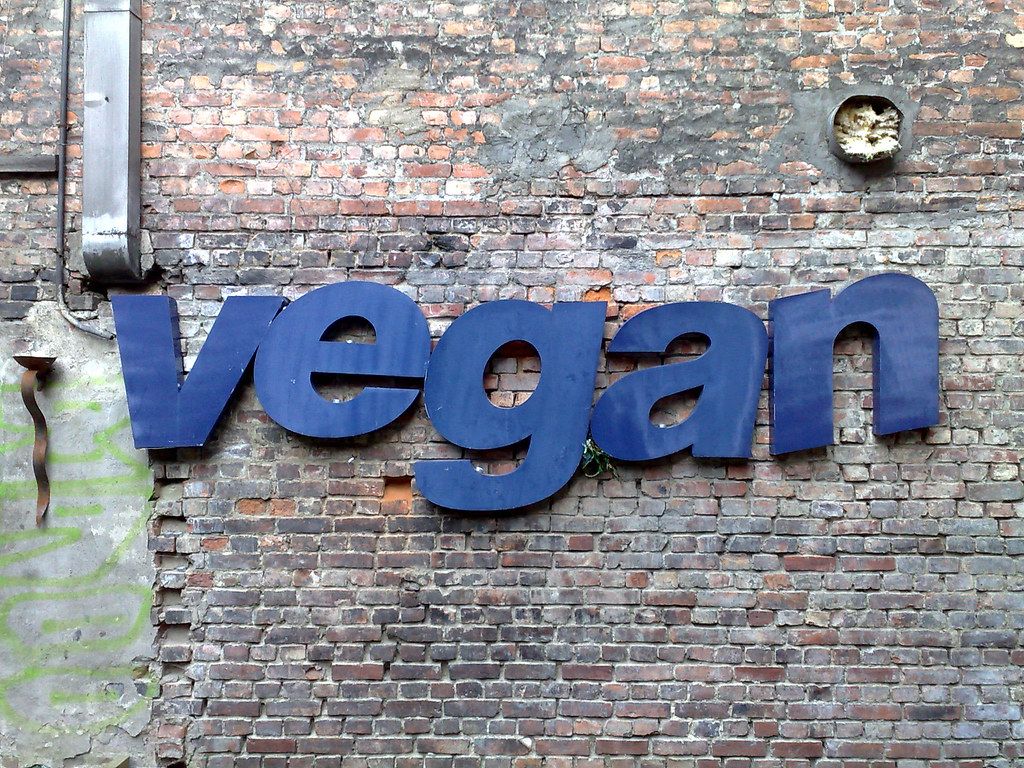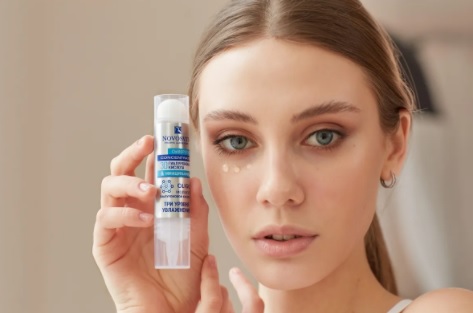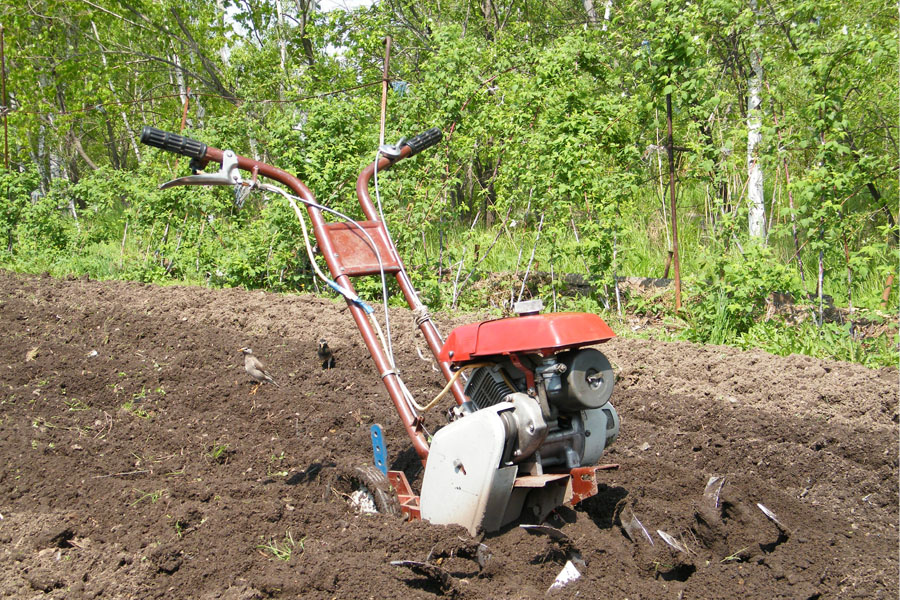Rating of the best primers for 2025

Primers or impregnations are a special liquid substance with which the surface is treated in order to prepare it for painting, puttying and other finishing work. As a standard, it includes substances capable of forming a film (various adhesives, bitumen and oils, resins), as well as pigments, drying boosters and other inclusions. More recently, wallpaper glue was used to prime surfaces (when it was necessary to prime the base under the wallpaper), or PVA / silicate glue, which was diluted with water, or simply primed with highly diluted paint. The tree was usually treated with drying oil.Nowadays, these methods are already a thing of the past, and it is possible to purchase both budget options for universal primers and high-quality highly specialized substances from world famous brands on the market.
Today's construction industry is able to offer a wide range of primers:
- Substances of deep penetration;
- Primers struggling with moisture permeability;
- Adhesion improving/strengthening paints;
- Anti-corrosion and insulating;
- Antiseptic and fungicidal, etc.
The scientific definition of a primer states that it is “a compound that is applied as the first layer to a surface prepared for painting / finishing, in order to create reliable adhesion of the covering (top) layers of the coating to the working surface and is designed to equalize its absorbent properties.” Conventionally, all primers can be divided into impregnations, i.e. solutions used for primary surface treatment, and for improving adhesion compositions. Both ready-made formulations and dry-based formulations, which require mixing with various solvents, can be sold on sale.

Content
- 1 Purpose of primer mixtures
- 2 Specific characteristics of primers
- 3 Existing types of primers
- 4 Features of the primer on mineral surfaces
- 5 Features of wood priming
- 6 Features of metal priming
- 7 Features of the primer with non-contact mixtures
- 8 Basic application rules
- 9 Questions of competent choice
- 10 Rating of the best primers for 2025
- 11 Finally
Purpose of primer mixtures
First of all, priming the substrates will help to apply subsequent layers of paintwork in a better way. In addition, such a coating will last much longer. There are some types of primers that can regulate the porosity of the treated surface while strengthening it. There are also compounds that prevent premature wear of materials and protect them from rust. It should be noted that the use of primers for painting will significantly reduce the consumption of expensive paintwork materials. Thanks to priming, the paint lays down in an even layer, and the existing irregularities will be smoothed out.
Specific characteristics of primers
Each mixture has its own special properties that help with the processing of various surfaces:
- Compositions for deep penetration - they are necessary for working on porous, loose or other surfaces that can absorb liquid like a sponge. The use of such compositions will significantly strengthen the working base and will reduce the consumption of the final material, for example, paintwork materials, which without a primer will be absorbed into the base in exorbitant quantities. The same compositions are perfect for surfaces that are intended for wallpapering.
- Antibacterial compositions are commonly used in bathrooms and bathrooms, because they have water-repellent characteristics and can prevent the growth of fungus in wet areas. Adhesion in such substances is so high that the material, for example, tile adhesive, is firmly fixed on the base. From this it can be seen that the risk of cracking is reduced significantly, which means that the likelihood of the growth of harmful microorganisms will also decrease. To achieve a greater effect, such compositions are advised to be applied in several layers.
- Anti-corrosion compounds - prevent the oxidation of metals, which means successful resistance to the formation of rust.
- The compositions are non-contact (they are also adhesive) - they include the smallest grains of quartz sand, therefore, after processing, the surface becomes rough, and it is possible to apply putty or glue wallpaper on it without effort. These compounds are used when the original surface is so smooth and incapable of absorbing liquids (i.e. does not have the required degree of porosity) that the applied material simply cannot “grab” it.
Existing types of primers
Modern and most popular types of primer mixtures are represented by the following compositions:
- Acrylic or emulsion - they are suitable for almost any type of base: wood and drywall, concrete and brick, as well as for applying putty and primer. An exception can only be metal bases, because the vast majority of these substances do not contain anti-corrosion substances. Among the main advantages of acrylic-based formulations are ease of use and the possibility of dilution with tap water.They dry quickly (2-4 hours) and they do not have an unpleasant odor, which makes acrylic primer extremely convenient for processing residential premises. Acrylic primers are available for both deep penetration and surface application.
- Alkyd - are widely used to prepare wood surfaces for painting, and their drying time varies from 10 to 16 hours. This priming solution, as it were, “looses” the surface layer of the tree, which significantly increases the adhesion between the tree and the paint. This primer qualitatively increases the durability of the coating, extends its service life. It is possible to prime metal bases with alkyd mixtures, however, they are ineffective in the treatment of mineral surfaces.
- Polyurethane and epoxy - in essence, they are paints that are diluted with appropriate solvents. As a rule, they process concrete in order to prepare for applying enamel to it.
- Shellac - such compositions are highly specialized and are used for processing branches on a cut of coniferous trees. They can also be used with water-soluble stains.
- Polystyrene - are used on plastered and wood bases, however, due to their high toxicity, they should only be used for outdoor work or in well-ventilated non-residential buildings.
- Special compositions for metal - they are divided into phosphate, insulating and protective. Insulating ones carry iron minium and zinc white in their structure. They simply do not interact with the metal, and mechanically do not allow moisture to penetrate to it. The group of insulating compounds includes phenol-formaldehyde and glyptal compounds.All of them are characterized by a different drying time - from a couple of hours to several days. Protective (they are also passivating) are distinguished by a high price, but at the same time they have a high quality threshold. Can be used for both ferrous and non-ferrous metals. Due to the high content of zinc (about 90%), such a coating withstands aggressive environments well. Phosphates increase the adhesion of metal to paint, while at the same time producing an anti-corrosion effect. Before starting work, this primer must be diluted with an acidic solvent. The application should take place in several layers under stable enamel. Most suitable for working on ferrous metals.
Features of the primer on mineral surfaces
Mineral bases are considered to be:
- plaster;
- aerated concrete;
- Concrete;
- cinder block;
- Brick.
That is, almost all the materials from which the walls and ceilings of structures are built.
A deep penetration primer rightfully takes the lead in preparing "bare walls" for coating. The essence of this operation is the deepest possible impregnation of the base material, while the polymer component perfectly adheres to the surface particles, making it the most porous. This significantly increases the adhesion of the subsequent layer with the mineral base. Often, deep penetration soils have antifungal (fungicidal) inclusions.
In the case when it is necessary to prime a too porous, fragile and loose base, then it is necessary to use primer with reinforcement. Such a composition has more adhesive components in its structure, i.e. when interacting with the material, they will significantly strengthen its upper part. It should be noted that the consumption of the primer mixture will depend on the porosity of the treated base.Reinforced primers are usually used to treat plaster that does not contain enough cement, such as in worn buildings. However, it must always be remembered that such mixtures are able to strengthen the material only to the depth of their penetration. This shows that they will not save the old and crumbling plaster.
A general purpose primer (aka universal) should be applied between coats. It is designed to improve grip. Allows you to apply coatings in an even layer. When using it, it is necessary to take into account the structure of not only the base material, but also the paint that will be applied with the subsequent layer.
An anti-alkali mixture will only be required if solvent-based paints containing alkali are to be used. The preferred surfaces in this situation will be newly laid concrete, cement screed or a surface treated with antiperm.
The non-contact mixture is used to work on particularly smooth surfaces, such as marble slabs, drywall, or bases painted with oil paints. The main purpose of its application is to increase the adhesive properties of the base.
Features of wood priming
The process under consideration should take place in several steps. First you need to protect the tree from biological factors that can cause the destruction of the base. This includes traces of rodent and insect activity, as well as manifestations of rot, the formation of fungus or the growth of algae. For such protection, special impregnations should be used, which have the following properties:
- insecticidal;
- pesticide;
- Fungicidal;
- Antiseptic.
Such impregnation should be applied in several layers.
Other primer mixtures should be applied to the wood immediately before painting (and in special cases - to replace it). They are designed to smooth or swell the base, depending on the future processing goals. After their use, the paintwork will lay down clearly more evenly, and its consumption will significantly decrease due to less absorption.
Special mixtures for priming wood can be represented by means for removing oiliness from the surface of coniferous products. Such agents are divided into saponifying and dissolving. However, upon completion of processing, mechanical finalization of the work (sanding) will be required.
Features of metal priming
When priming metal (especially its black varieties), which has obvious traces of rust, first of all, you need to use a corrosive converter. After its application, mechanical grinding should be carried out, and only then proceed to the priming of the base. These steps must be performed even if the primer mixture itself already contains the main element of the converter - phosphoric acid. The number of samples of mixtures for priming metals, both ferrous and non-ferrous, is very wide, therefore, you should always get acquainted with the recommendations of the manufacturers. For example, galvanized iron should only be primed with solutions for non-ferrous metals.
Features of the primer with non-contact mixtures
In practice, non-contact primer has proven itself far from being the best option for preparing surfaces before laying ceramic tiles, and even more so - porcelain stoneware. This is due to the fact that tile adhesive has a higher adhesive power than the primer itself.The adhesion strength of tile adhesive starts from 0.5 megapascals, while for a non-contact compound it is only 0.4 megapascals (with crumbling, slightly absorbent materials). All this leads to a decrease in the direct adhesion of the adhesive to the surface. Due to the large mass of porcelain stoneware or ceramic tiles, increased pressure will be created on the primed substrate. As a result, non-contact can “get off” from the surface along with the tile or begin to peel off.
In order to avoid a negative result, in the process of preparing the base, it is necessary to use high-quality primer brands from well-known brands. It is also not recommended to use non-contact solutions on various loose surfaces. On such bases, the primer will not be able to provide the adhesion declared by the manufacturer. The adhesive force of the mineral base with the applied layer will be significantly reduced. Taking into account the fact that the adhesion of plaster solutions starts from 0.3 MegaPascals, one should not expect a positive effect from such treatment.
In addition, non-contact solutions should not be applied to non-absorbent bases, such as plastic, metal or wooden surfaces (some wood species). With such bases, the layer will not be able to adhere normally, and even if this happens, then one must not forget about the main property of non-contact - its vapor permeability. The accumulation of condensate between the primer and the surface will cause defects very quickly.
Basic application rules
Working with primer substances is quite simple, anyone can cope with this slave, without special skills and experience, however, some rules still need to be observed:
- Before starting work, it will be necessary to clean the treated base from construction debris, oily stains and dust;
- If there are metal parts on the surface, they must be cleaned of traces of corrosion;
- The primer is applied with a wide brush or paint roller, while the level of uniformity of the layer being placed must be observed;
- For large-scale premises, it makes sense to use an airbrush, which will significantly reduce the time spent on work;
- The vast majority of primer solutions are very sensitive to temperature conditions, so work must be carried out in a temperature range from +5 to +30 degrees Celsius;
- If the base to be treated is highly porous, then priming occurs in at least two or three layers, along with this, the resulting cracks and cracks are sealed;
- Each next primer layer is applied only after the previous one has completely dried.
IMPORTANT! Some types of primers require additional preparation, so they must be diluted with a solvent or water to obtain the desired consistency. As a rule, a one-to-one ratio is used, unless a different ratio is specified by the manufacturer.
Questions of competent choice
In order for priming work to be carried out properly, the following issues must be considered:
- Decide on the material of the surface to be treated - whether there are any different constituent structural elements in it (for example, metal and wood structures that need to be painted over at the same time).
- Check the condition of the base - if the surface is too porous or loose, then it will absorb a significant amount of primer, which means an increased cost of funds. Accordingly, the choice will need to be made in favor of certain compositions.
- It is necessary to consider the type of layer on which the primer solution will be applied.
- Make an assessment of the surrounding conditions - whether an increase in humidity levels is expected, whether a sharp increase / decrease in temperature is expected.
- Estimate the approximate consumption of primer material - this indicator will affect the method of application. For example, brushing walls or other surfaces with a brush is a laborious process, however, in this case, the savings will be obvious. If you work with a roller, then the consumption will increase. Professionals choose the "golden mean" and use a spray gun.
The name of the manufacturer is also important for choosing a mixture, because brands that value their reputation supply the best product to the market, which is guaranteed to give a quality effect. These include:
- "ARRR";
- "Marshall";
- "Tikkurila";
- "Polymin";
- "Escaro";
- "Knauf".
Rating of the best primers for 2025
Acrylic
3rd place: "SENBION S-Gr-14810/1"
This mixture contains a special filler of the original production, which specifically increases the adhesive degree of application. Therefore, the composition can be applied to various materials without doubting the quality of the adhesion. The manufacturer recommends working with a primer on thin-layer materials, as well as on OSB-boards and plywood bases. The coating is breathable, durable, with good absorbent properties. Prevents the appearance of mold and mildew.

| Name | Index |
|---|---|
| Manufacturer country | Russia |
| Sales volume, liters | 1.03 |
| Additional properties | Not |
| Price, rubles | 170 |
- Small price;
- Antiseptic properties available;
- Without smell.
- Fear of frost.
2nd place: "DALI 1L 6 15701"
The material is distinguished by its strengthening properties, it is perfectly capable of preparing loose and porous mineral surfaces for processing. These include wood, plaster, concrete and brick. It is possible to work with the mixture both outside and inside the premises. Thanks to its dispersion-water base, the composition will save on finishing painting.
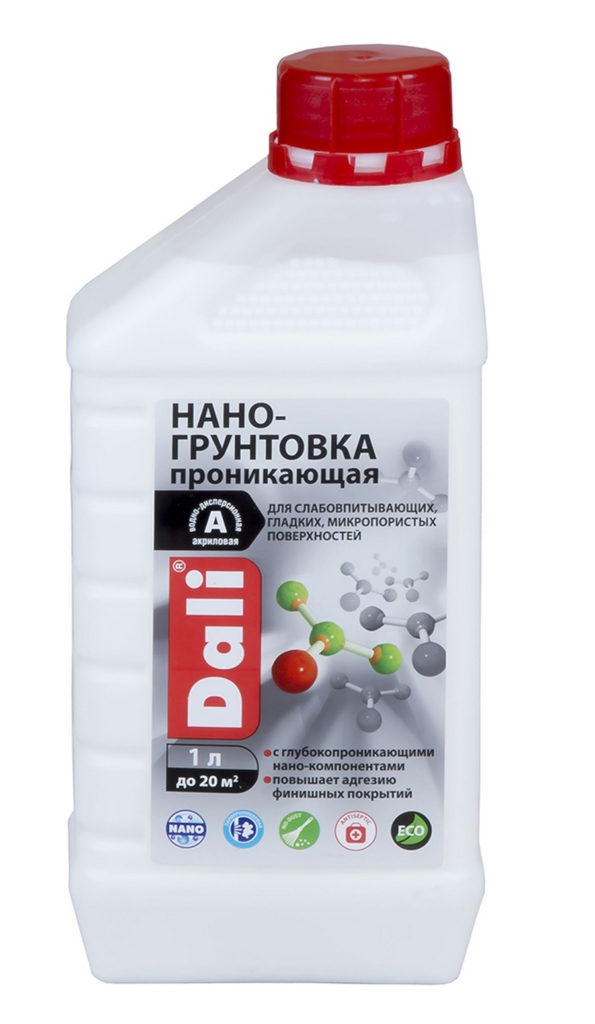
| Name | Index |
|---|---|
| Manufacturer country | Russia |
| Sales volume, liters | 1 |
| Additional properties | Has frost resistance |
| Price, rubles | 190 |
- Frost resistance available;
- budget cost;
- Drying speed.
- Not detected.
1st place: "RUST-OLEUM Zinsser bulls yey 1-2-3 255403"
A fairly expensive type of primer from a popular Western brand. Despite the more than high price, it is a tool with increased efficiency. The composition lays down very evenly, has a high level of adhesion to the surface, and has the function of removing stains. It can easily work on aluminum and galvanized metal, as well as glossy paintwork materials and ceramic tiles. The resulting coating will be resistant to the formation of fungus and mold. It has a pH-neutral component, so it can be used in food production.

| Name | Index |
|---|---|
| Manufacturer country | Sweden |
| Sales volume, liters | 0.95 |
| Additional properties | Possesses pH neutrality |
| Price, rubles | 1600 |
- Versatility;
- Multifunctionality;
- pH-neutrality.
- Non-critical slight smell of ammonia (quickly disappears).
Contactless
3rd place: "GU - 5L Goodhim 73091"
This composition is particularly versatile, comes in bulk containers, perfectly suited for processing both horizontal and vertical surfaces. It is quite suitable for preparing the base for the final stage of finishing. It is possible to work both indoors and outside on the facade. The manufacturer claims an extremely low consumption - from 80 to 120 grams per square meter.
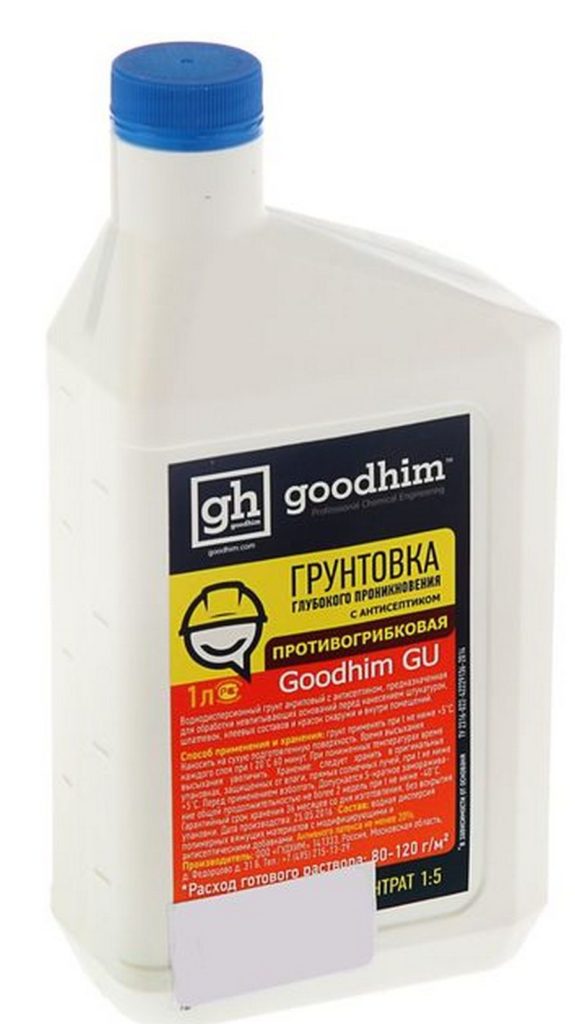
| Name | Index |
|---|---|
| Manufacturer country | Russia |
| Sales volume, liters | 5 |
| Additional properties | Contains flame retardants |
| Price, rubles | 560 |
- Capacious container at a small price;
- Economic consumption;
- Has inclusions of flame retardants.
- Not detected.
2nd place: "TERRACO TERRAGROUND Maxi universal"
This product is a budget option of the western analogue, it has a small cost, however, it has not lost much in its functionality. Supplied in a very large container. Has fungicidal properties. It can be used on concrete and brick, while it has the characteristics of increased penetration.
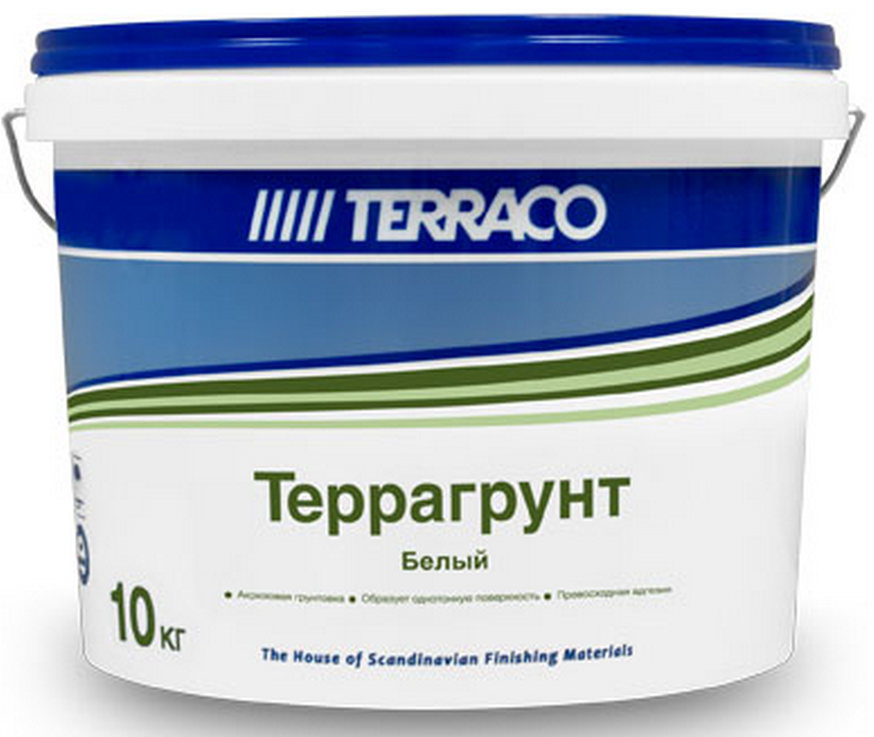
| Name | Index |
|---|---|
| Manufacturer country | Russia |
| Sales volume, liters | 10 |
| Additional properties | Not |
| Price, rubles | 780 |
- Increased volume of commodity packaging;
- Enhanced degree of penetration;
- Antiseptic properties.
- Not found.
1st place: "CERESIT CT 19 5 kg 1/120 23681"
Such a composition is intended for processing fragile, crumbling and poorly absorbent surfaces (cement, concrete, brick, stone). You can work both inside buildings and on the facade. The manufacturer claims increased adhesive properties, guarantees a high degree of smoothing.Suitable for finalizing decorative finishes, although it will also work well with the application of glue.
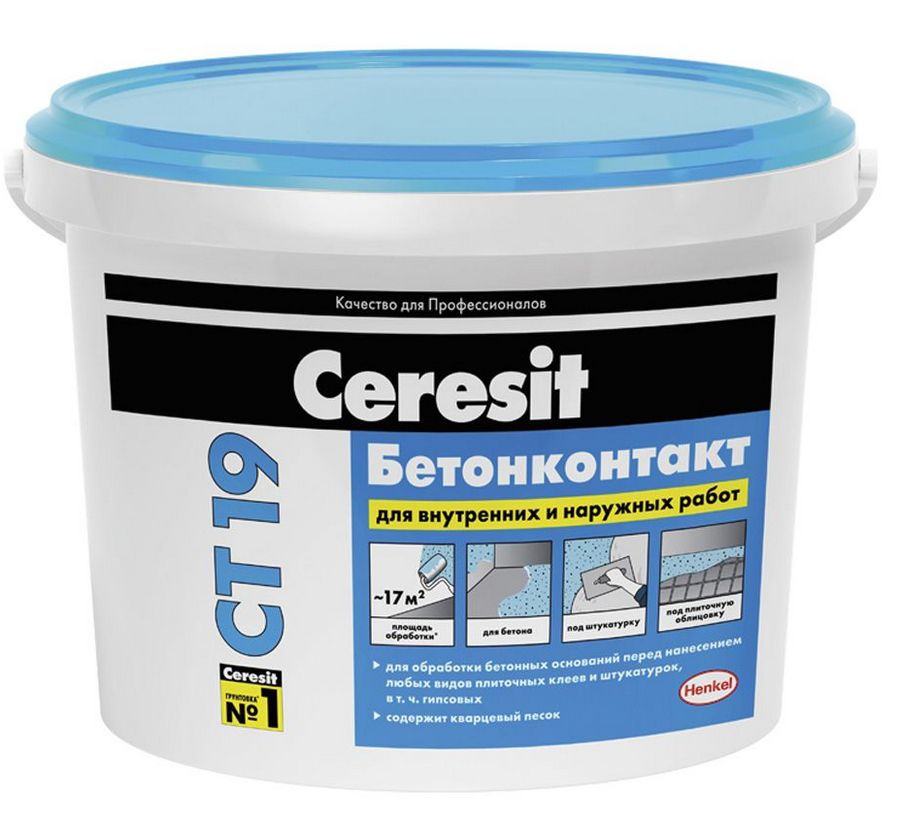
| Name | Index |
|---|---|
| Manufacturer country | China |
| Sales volume, liters | 5 |
| Additional properties | Not |
| Price, rubles | 850 |
- Good value for money;
- The ability to level the surface;
- Dries quickly.
- Not detected.
Polyurethane
2nd place: "TIKKURILA INDUSTRIAL TEMADUR 50 TAL polyurethane 2.25 l 50672210330"
An excellent water-based polyurethane paint with primer properties, meaning no final finishing step is required. Supplied in a fairly large container. Also, the composition has the ability to be tinted. The product of the world famous Scandinavian brand.
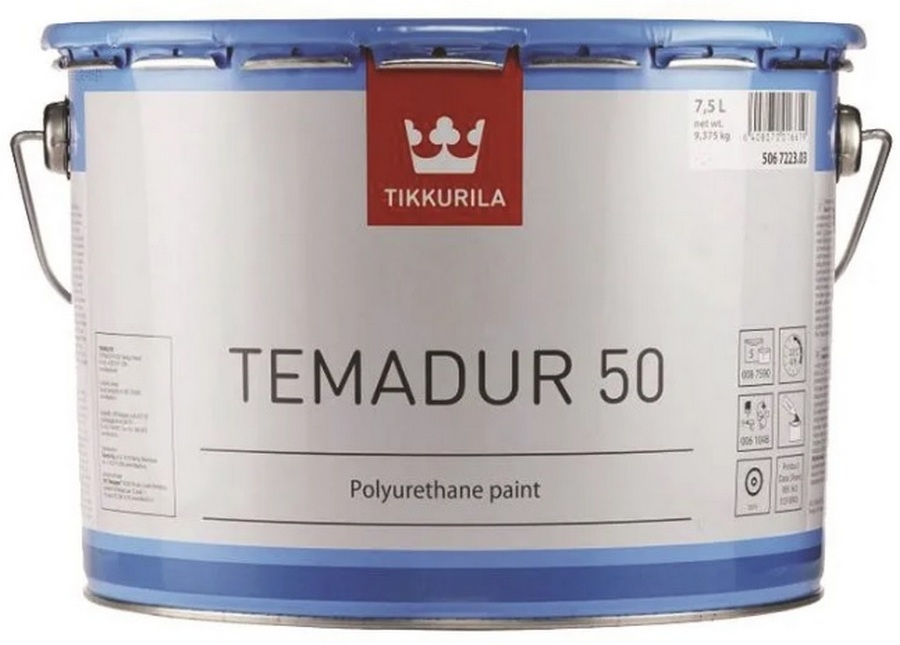
| Name | Index |
|---|---|
| Manufacturer country | Finland |
| Sales volume, liters | 3.5 |
| Additional properties | tinting |
| Price, rubles | 2800 |
- The possibility of tinting;
- There is no need to carry out final finishing;
- Product of a well-known Finnish company.
- Not suitable for medical facilities.
1st place: “Polyurethane two-component floor repair compound for 15 sq.m. GRASPOLIMER 280010"
This mixture is primarily proposed to be used as a repair agent. It is designed to repair horizontal surfaces in industrial premises. The mixture is resistant to temperature extremes, exposure to direct sunlight, mechanical shock and increased vibration. The manufacturer declares one of the main characteristics of economical consumption.
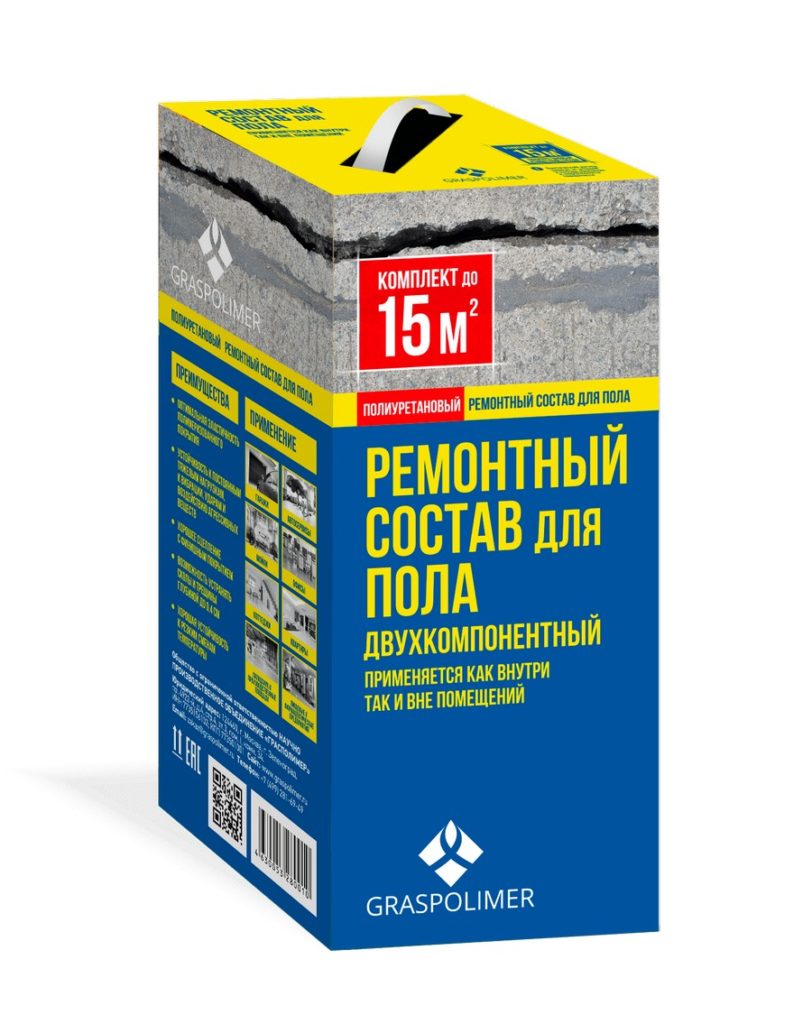
| Name | Index |
|---|---|
| Manufacturer country | Russia |
| Sales volume, liters | 5 |
| Additional properties | Not |
| Price, rubles | 4500 |
- Dries quickly;
- Resistance to mechanical damage;
- Economical spending.
- Not detected.
Finally
The selection of the primer mixture will directly affect the final result of the building finish. The level of savings will also depend on its quality and well-chosen characteristics. And if mistakes are made, there is a high probability that in the future the plastered bases will swell and the entire repair will go to waste.
new entries
Categories
Useful
Popular Articles
-

Top ranking of the best and cheapest scooters up to 50cc in 2025
Views: 131649 -

Rating of the best soundproofing materials for an apartment in 2025
Views: 127688 -

Rating of cheap analogues of expensive medicines for flu and colds for 2025
Views: 124516 -
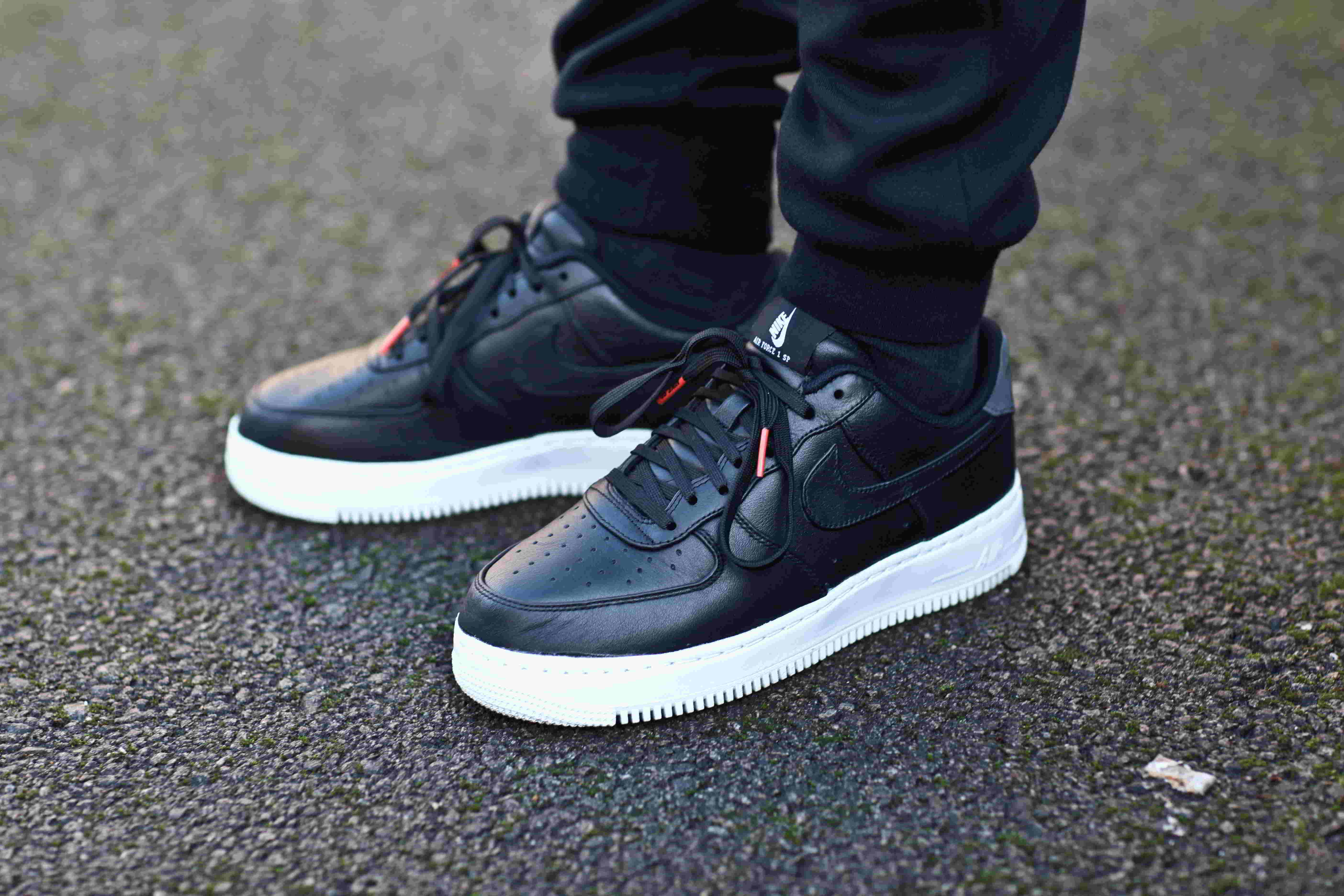
The best men's sneakers in 2025
Views: 124030 -
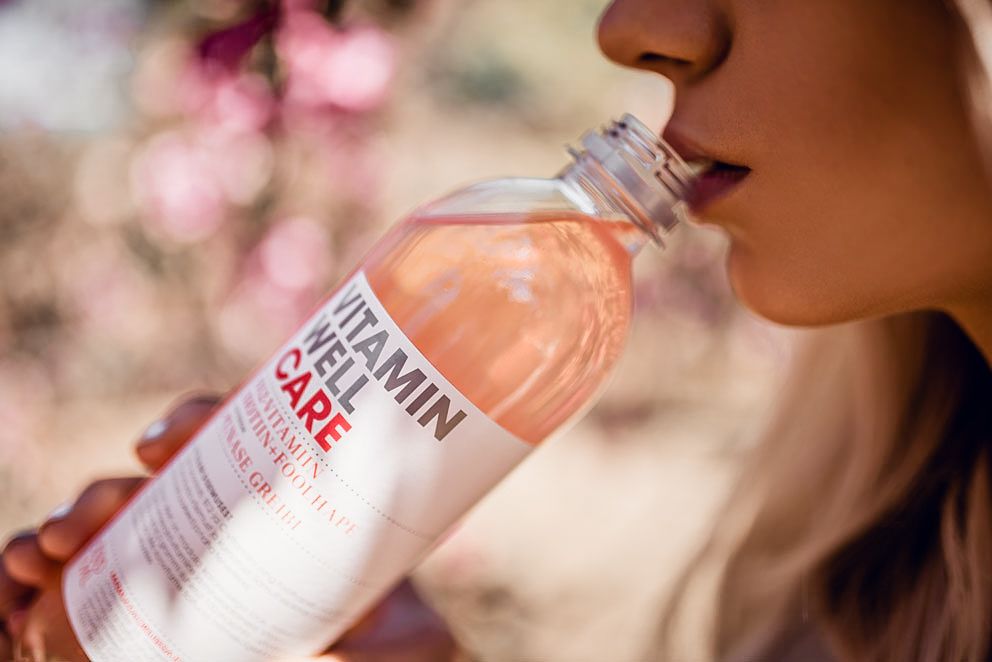
The Best Complex Vitamins in 2025
Views: 121937 -

Top ranking of the best smartwatches 2025 - price-quality ratio
Views: 114978 -

The best paint for gray hair - top rating 2025
Views: 113393 -

Ranking of the best wood paints for interior work in 2025
Views: 110318 -
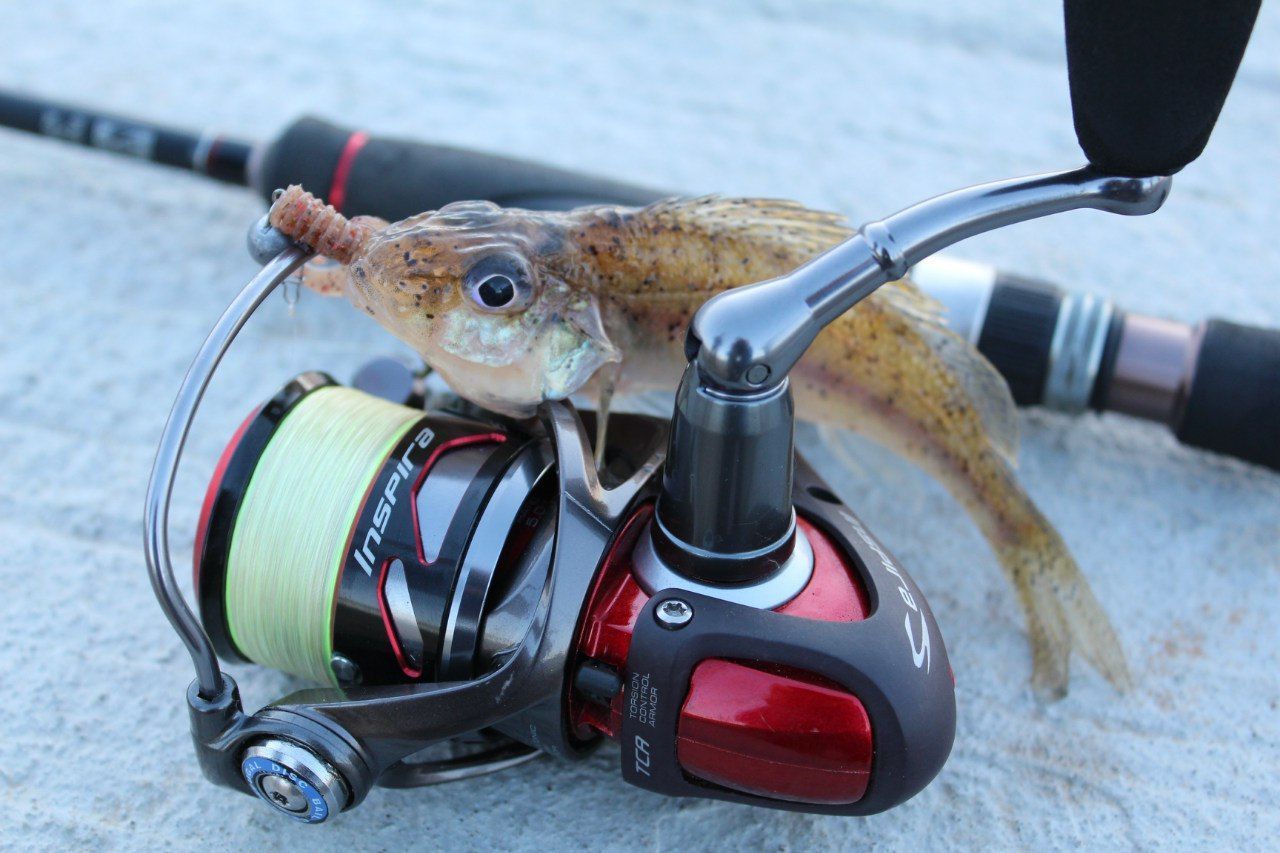
Rating of the best spinning reels in 2025
Views: 105327 -

Ranking of the best sex dolls for men for 2025
Views: 104363 -

Ranking of the best action cameras from China in 2025
Views: 102214 -
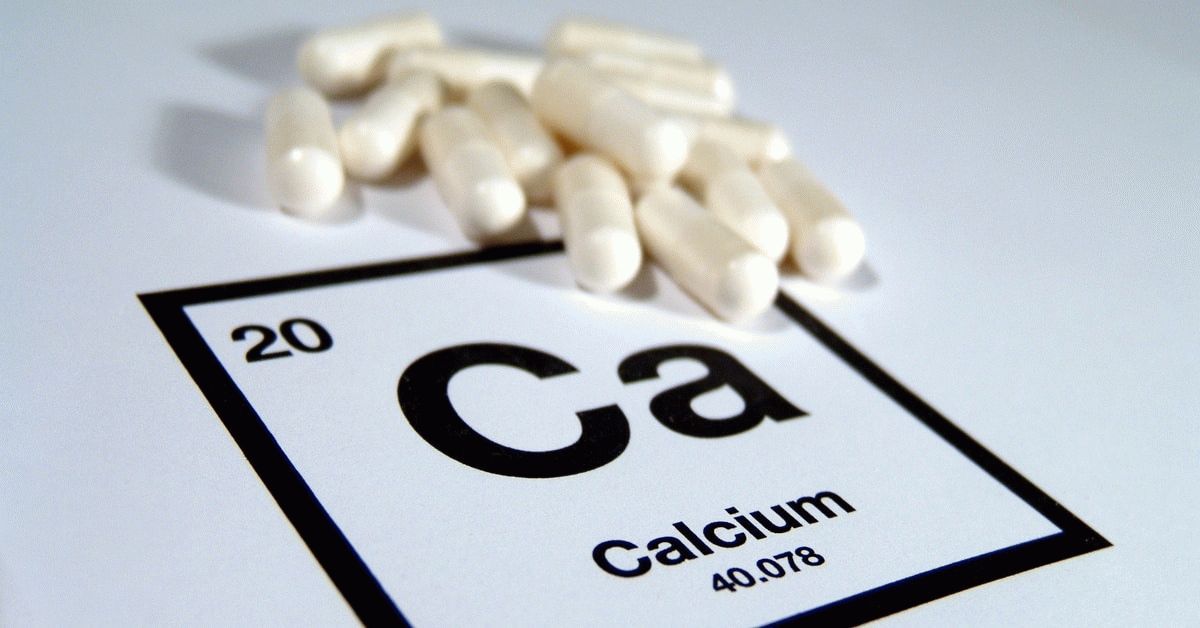
The most effective calcium preparations for adults and children in 2025
Views: 102010
